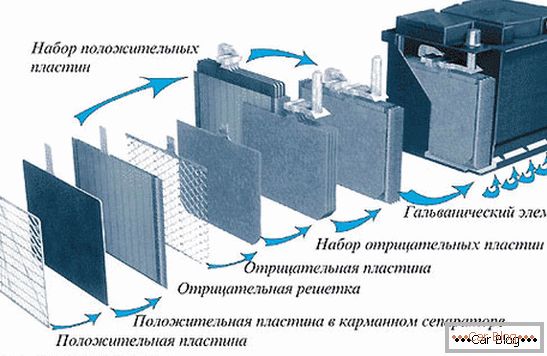With the consequences of underfilling the engine oil motorists are more common than with its excess. However, a positive outcome from the excess volume should not be expected. In the article we will explain what happens if you pour oil into the engine, and how to return the normal level of this fluid.
Excessive volume affects the performance of the engine, disabling some systems, disbalances the sensors and contributes to increased oil consumption. Especially if there is a significant excess of the norm.
Content
- 1 How to check the engine oil level
- 2 reasons for exceeding the level
- 3 The consequences of overflow
- 4 Ways to remove excess engine oil
- 5 Conclusion
How to check the engine oil level
Checking the oil level is carried out using a special probe. It is fixed on a sealed plug, permanently inserted into the hole in the cylinder block. For accurate verification you need to start the car and warm it up at idle about 10 minutes to get the right fluid viscosity.
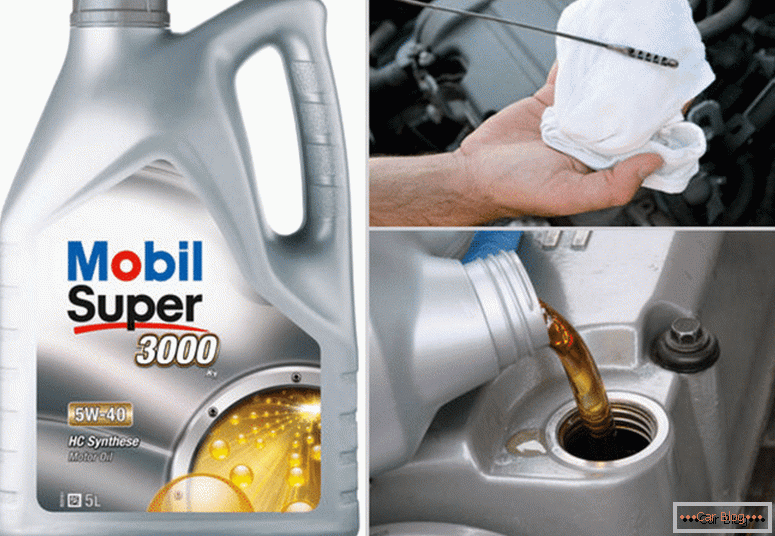
Measurement of engine oil level
After that, you need to turn off the engine and wait a few minutes to the bulk of the oil glass in the sump pan. We take out the dipstick and wipe its lower part with the marks “min” and “max” dry, leaving no oil and residues of rags on the dipstick. Next, return the meter to the hole by inserting it all the way, and carefully remove it again.
If this metal bar is smeared into the engine oil above the minimum and below the maximum level, then the level of this fluid in the system corresponds to the norm. If the bar is smeared well above the “max” mark, then this indicates that the engine overflow has been allowed.
Reasons for exceeding the level
The most common cause is banal distraction when replacing or topping up a fluid. So, during the self-replacement of the driver is not fully disposed of working off. Most often, 0.2-0.25 l do not have time to completely drain from the system. Such a surplus can lead to undesirable consequences.
See also: How to check the crankshaft sensor with your own handsHowever, the owner of the car, without waiting for the full release of the liquid, fills in a new one. When replacing at the station, they can also make a similar mistake in a hurry. But for high-quality replacement in car services, the driver may be interested in the presence of vacuum pumping. This method will minimize the risk of mining.
The consequences of overflow
Liquids expand with increasing temperature. Due to this process, pressure on seals, gaskets, gaskets, up to the deformation of the sealing elements increases. After that, they can not perform their work and leakage begins, while reducing pressure in the system, increasing oil consumption.
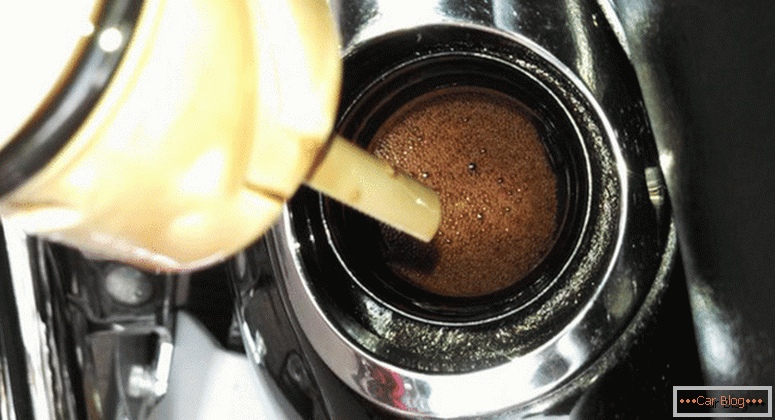
Oil is whipped into foam
During a critical increase in pressure, pulsed emissions occur. It is also possible to flood candles and problems with ignition, loss of power, increased fuel consumption. The same symptoms occur during pulsed emissions when the mass flow sensor is filled. He begins to give false testimony, which leads to additional cost overruns.
With a significant excess of lubricating fluid in the system, the crankshaft is almost always in this volume. By their counterweights he whips everything into foam while working. Air bubbles are formed that reduce uniformity. Such consequences of oil overflow into the engine lead to airing of the hydraulic compensators and their malfunction. There are shock loads on other nodes of the gas distribution system, leading to the rapid production of parts.
Also if the design of the air-knot is not collapsible, it will have to be replaced. However, the cost of this item is quite high.
Increasing the pressure in the lubrication system places a significant load on the oil pump. Its gears are subject to unreasonably high wear. In addition, air bubbles can carry particles of dirt from the sump further down the system. This process quickly pollutes the oil filter.
You need to know that the effects of overflow are manifested to a greater extent on vehicles with a significantly developed resource.
Motors with a large output almost immediately react to overflow in the form of a few millimeters of excess on the dipstick by leaks from under the glands. The strategy of waiting for the excess oil to self-burn is ineffective. During this period, other, sometimes more serious damage may occur.
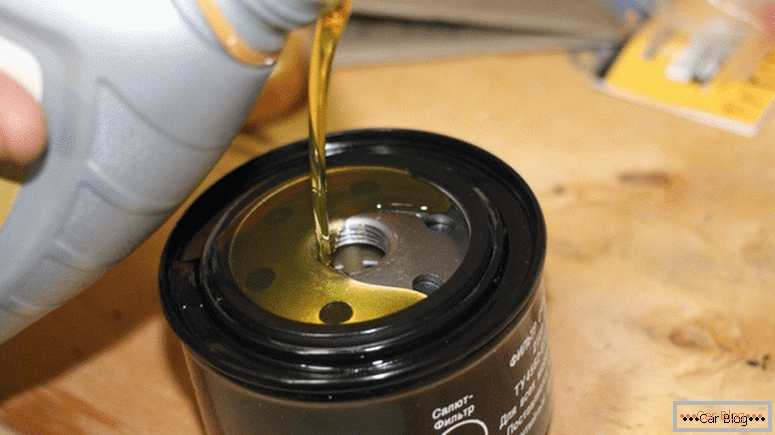
Filter removal
For new cars, a small overflow brings not such sad consequences as for old cars. But if the problem is not solved for a long time, then trouble can arise. Therefore, it is faster to get rid of a significant excess oil.
See also: How does Webasto work on dieselWays to remove excess engine oil
To drain a small amount of excess lubricant, you can unscrew the oil filter for a while. Under the hole it is necessary to substitute the container. After waiting a bit when a sufficient amount is drained, you need to screw the filter back. If the level is exceeded significantly, then it will be necessary to remove the excess through the drain plug, unscrewing it for a short period or through the hole of the probe to check the level.
Traditionally, a medical syringe is used for several cubes and a flexible tube from under the dropper. Firmly connecting one end of the hoses with a syringe, lower the second into the hole. After pumping out part of the oil, you can check and, if necessary, repeat the operation. This procedure should be carried out with the engine cooled down.
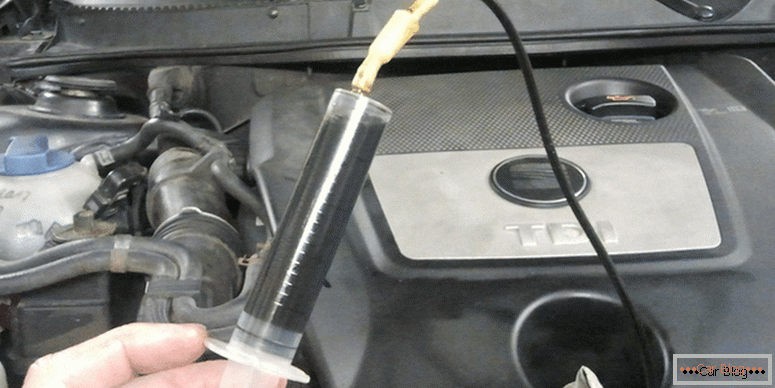
Taking away excess oil from the system
If there is a selection of more than the estimated volume of oil, then it can always be poured back into the system to the required level.
Conclusion
Now you know what threatens the overflow of engine oil, and it's time to sum up some of the results:
- engine oil level should be monitored regularly. It is necessary that it be in the interval set by the manufacturer (we look at the risks on the dipstick);
- the optimal level is considered to be 3/4 of the maximum reading;
- an excess or lack of oil in the system can lead to engine damage, this is especially true for cars with high mileage;
- If a level deviation from the norm is detected, it should be eliminated as soon as possible by topping up or pumping out liquid.

